An Adobe expert is someone that has passed a test or a series of tests on how to use Adobe software. You can test on individual programs and get certified. You can also test on a series of software programs and get different levels of certification. You pay a fee and have to pass with at least a 61 percent. I took the test for Adobe Illustrator. I’ve used the program for 15 years and thought it would be a breeze. I’m here to say, it certainly wasn’t. It was extremely difficult.
Author Archive |
You might as well forget going after the posted graphic design internships. There are so many people applying for these spots that your chances are slim to none. Here is a better way to approach the internship hurdle: 1. Compile a list of companies that you would like to do your internship with. 2. Call these companies. Don’t ask if you can apply for an internship position. Instead, ask for the creative director or senior art director. 3.
When evaluating the quality of color in a proof the best tool is our eyes. The human eye is able to sense wavelengths of light ranging from about 380 nm to about 780 nm, which means we have the ability to see millions of colors, well beyond the gamut of most devices. Six factors that may impede our ability: 1. Color blindness — People with color blindness can not discriminate between certain colors. 2. Aging — As we get older, a yellow filter forms on the eye affecting color perception. 3.

You’ve worked half the night on this project. It really looks fantastic on your screen. You send a PDF to your client and they love it. They say, “Go with it, no changes.” Next you send it to the printer and you get a proof. With great anticipation you remove the proof from the oversized envelope and you can’t believe your eyes. “What’s wrong with the color?” you gasp. 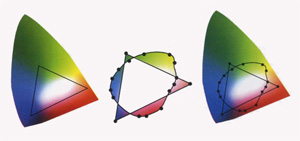 Here’s what could be happening: A range of colors is commonly referred to as a color gamut.
Here’s what could be happening: A range of colors is commonly referred to as a color gamut.
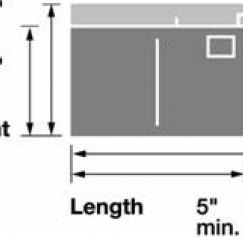
Knowing the size at which the cost of postage goes up on a postcard can make you a hero with your clients. 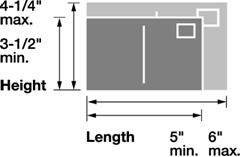 For a postcard to mail under the postcard rate (currently $.27 as of February 2009) it has to measure between 5 inches minimum and 6 inches maximum in width; 3.5 inches minimum and 4.25 inches maximum in height; and between .007-inch and .016-inch thick. Business reply cards are a slightly different animal.
For a postcard to mail under the postcard rate (currently $.27 as of February 2009) it has to measure between 5 inches minimum and 6 inches maximum in width; 3.5 inches minimum and 4.25 inches maximum in height; and between .007-inch and .016-inch thick. Business reply cards are a slightly different animal.
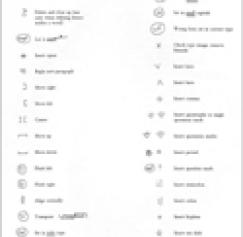
Whether you are doing the proofing or making edits to a project, a graphic designer has to know what proofreaders’ marks mean. It’s a very good idea to have someone else proof a project that you are working on. Usually, because you are so familiar with the contents, you are likely to overlook errors another reader would catch. 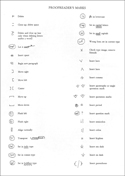 When proofing, always make corrections using a red pen.
When proofing, always make corrections using a red pen.
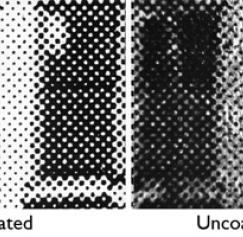
When it comes to selecting a paper stock for a project many times it comes down to personal preference. Most designers will consider the message of the piece and the audience, or what kind of artwork or photography is being used. The tactile feel of the paper can range from slick to velvety to downright rough. I find that if I’m selling a hard product with glossy slick photos that a gloss stock seems right. If I’m selling a luxury item I may use a coated matte stock.
Sometimes we, as graphic designers, forget the ascents of our role. We get caught up on the trends and the techniques. Trying to produce cutting-edge work or award-winning work is fine, but when it comes right down to it, what is it we are supposed to be doing? Plainly put, we organize information so it’s easy to take in and be quickly absorbed.
Get surefire attention with a self-promotion that goes 3-D. Instead of a flat, blah envelope that can get lost in the shuffle, put a box on a prospective client’s desk. Nobody can resist the need to see what’s inside. With a clever headline on the outside and a payoff inside, you can hit a home run. Once you’ve got them “in the box” a few of your samples will make the sale. Make it easy. Visit your local box store or, better yet, put a call into a vendor such as Uline and get a couple of free sample boxes. They will ship them right to your door.
With our busy lives sometimes we forget to feed our brains. As we know, the creative process is not like turning on a faucet. Designers have to make an effort to refuel and refresh our reserves. Many time when I’m feeling blocked it’s really more a case of just needing new input. Here are a few ideas on finding inspiration: Design conferences provide a robust infusion of creative fodder. Guest lectures, product demos and keynote speakers provide input. Plus, all the T-shirts and pens you can score. You can also meet so many interesting people at these events.
As a designer I work with a writer as a creative partner on most of my projects. I find that collaboration on such projects is the result of creative needs versus the basic parameters of the project. Also, conflict forces commitment and crystallization of reasons for solutions, so sometimes working with a writing partner who has an opposite viewpoint or working style produces better work. I like to first work on the project alone and then get together with the writer. In most cases melding our ideas or selling one we feel strongly about to the other partner makes for stronger results.

Recently I was doing some pro-bono work for a fundraising group. They didn’t have much money to spend (of course), and I wanted to do something nice for them. As you know if you’ve ever done pro-bono work, there isn’t money to burn. The whole goal is to get as much for your money as possible, and spending money on printing usually isn’t high on their list of necessities.
Pages
What is the PsPrint Blog??
The PsPrint Blog is a resource for graphic designers, freelancers, small business owners and fans of print marketing. You'll find helpful techniques on printing everything there is to print, including business cards, postcards, brochures, stickers, invitations, greeting cards, door hangers, magnets and more. The PsPrint Blog shares creative ways to improve your design and layout skills, and useful tips for marketing your business in any medium. We also like to have a little fun, sharing design inspiration and spotlighting some our favorite customers' printed pieces in our "Hot Off the Press" series.








